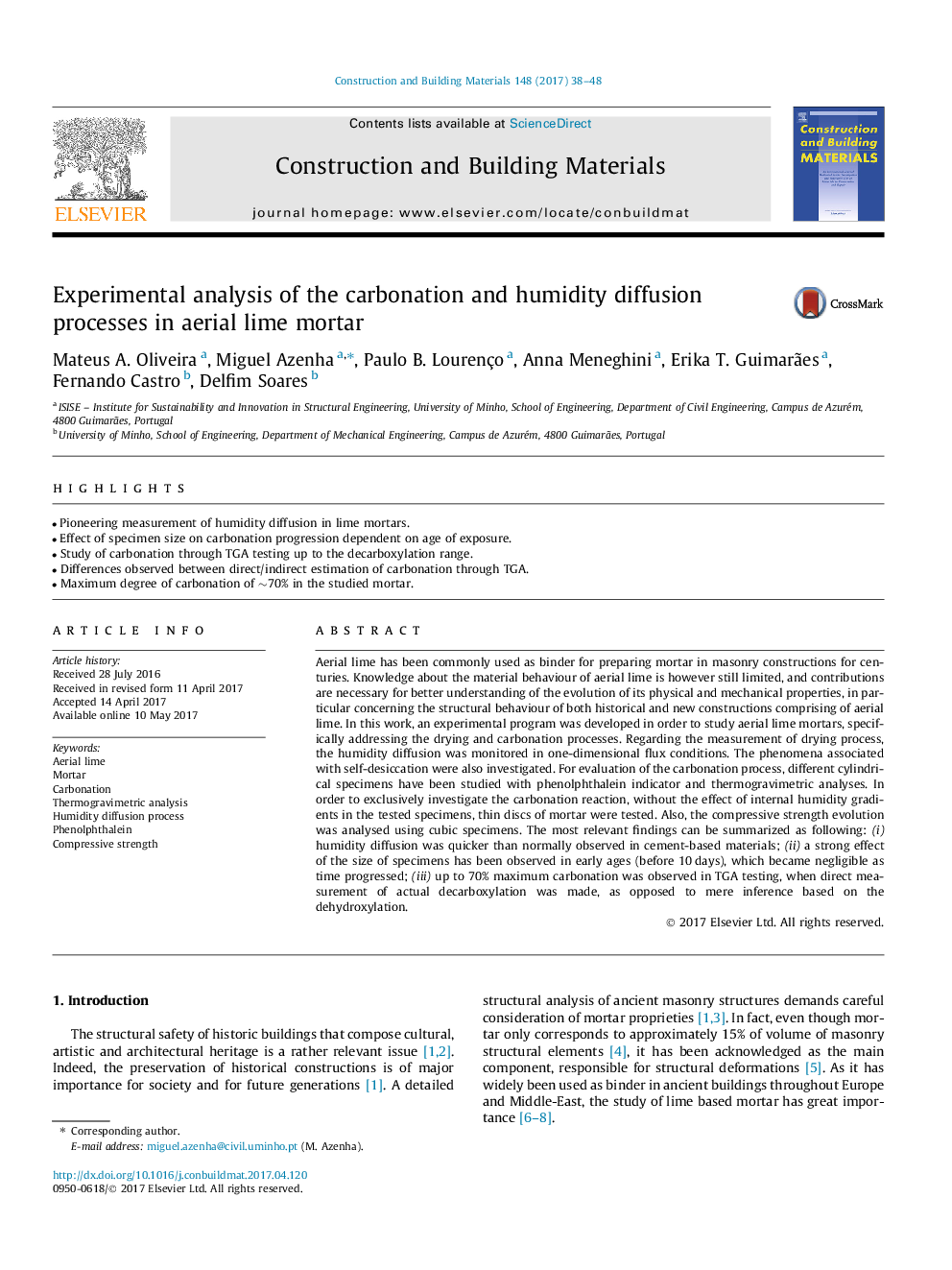| کد مقاله | کد نشریه | سال انتشار | مقاله انگلیسی | نسخه تمام متن |
|---|---|---|---|---|
| 6480275 | 1428758 | 2017 | 11 صفحه PDF | دانلود رایگان |
- Pioneering measurement of humidity diffusion in lime mortars.
- Effect of specimen size on carbonation progression dependent on age of exposure.
- Study of carbonation through TGA testing up to the decarboxylation range.
- Differences observed between direct/indirect estimation of carbonation through TGA.
- Maximum degree of carbonation of â¼70% in the studied mortar.
Aerial lime has been commonly used as binder for preparing mortar in masonry constructions for centuries. Knowledge about the material behaviour of aerial lime is however still limited, and contributions are necessary for better understanding of the evolution of its physical and mechanical properties, in particular concerning the structural behaviour of both historical and new constructions comprising of aerial lime. In this work, an experimental program was developed in order to study aerial lime mortars, specifically addressing the drying and carbonation processes. Regarding the measurement of drying process, the humidity diffusion was monitored in one-dimensional flux conditions. The phenomena associated with self-desiccation were also investigated. For evaluation of the carbonation process, different cylindrical specimens have been studied with phenolphthalein indicator and thermogravimetric analyses. In order to exclusively investigate the carbonation reaction, without the effect of internal humidity gradients in the tested specimens, thin discs of mortar were tested. Also, the compressive strength evolution was analysed using cubic specimens. The most relevant findings can be summarized as following: (i) humidity diffusion was quicker than normally observed in cement-based materials; (ii) a strong effect of the size of specimens has been observed in early ages (before 10Â days), which became negligible as time progressed; (iii) up to 70% maximum carbonation was observed in TGA testing, when direct measurement of actual decarboxylation was made, as opposed to mere inference based on the dehydroxylation.
Journal: Construction and Building Materials - Volume 148, 1 September 2017, Pages 38-48
